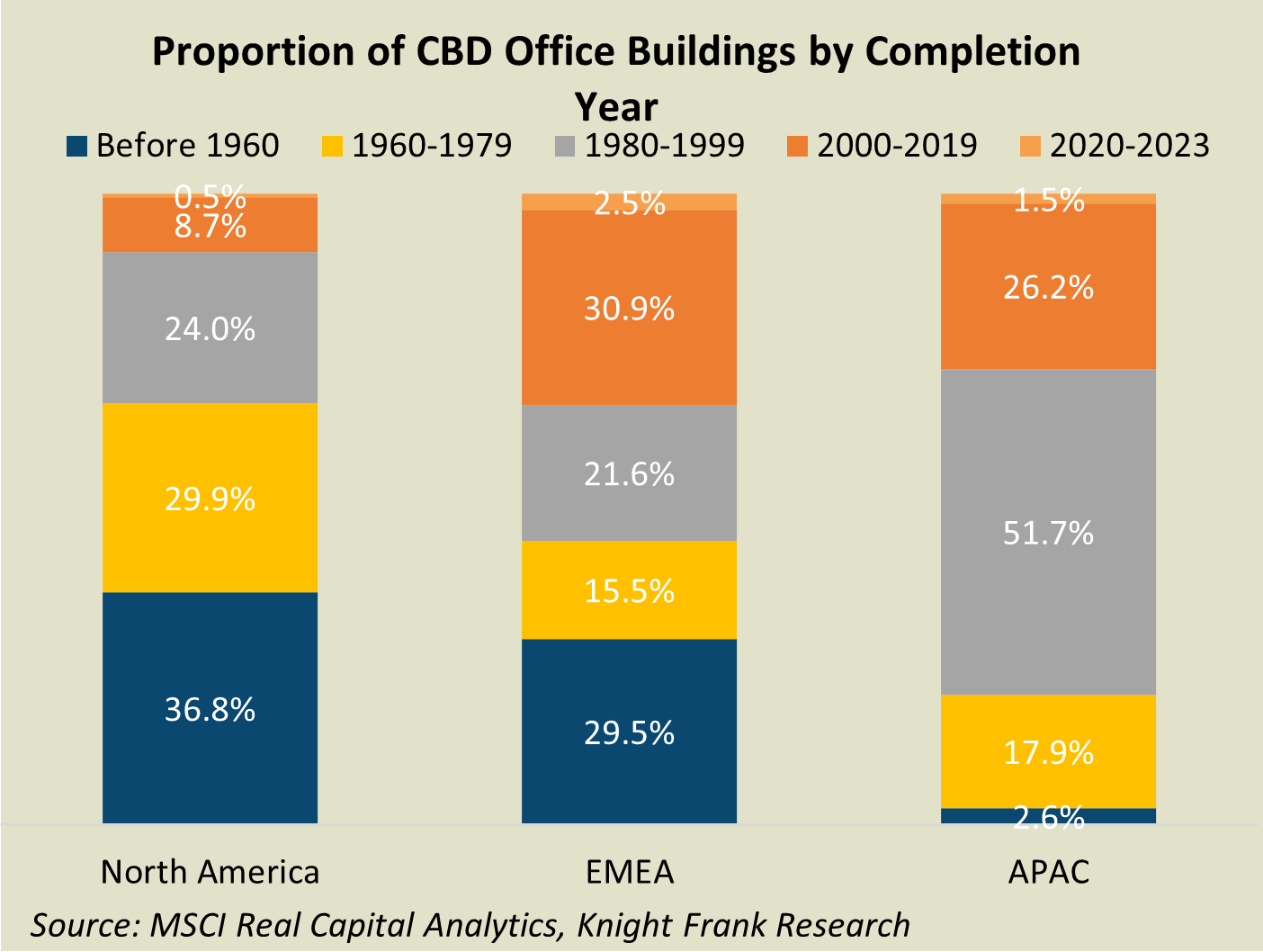In Asia Pacific, newer premium office buildings are more well-positioned to meet the rising demand for the 'flight-to-quality' and 'flight to green' trends, according to Knight Frank's Horizon: Asia-Pacific Tomorrow report.
Knight Frank, an independent global property consultancy, said with 79.4% of buildings in Asia-Pacific aged 40 years or younger (vs 33.2% in North America and 55.0% in EMEA), the nascent office market offers an opportunity to build cutting-edge office buildings with the latest amenities without the risk of becoming obsolete.
This aligns with the growing emphasis on high-quality office space.
The forecast is one of three top predictions from the real estate consultancy's flagship report, which provides predictions for the commercial property market over the next 12 months, including emerging trends, opportunities, and challenges.
It cited three reasons why the Asia-Pacific office sector is the backbone of the office-first hybrid strategy, including an emphasis on newer and ESG-certified buildings.
"The newer premium office buildings in Asia-Pacific are more well-positioned to build an Environmental, Social, Governance (ESG)-compliant portfolio aligned with the growing preference among APAC occupiers for modern, sustainable workspaces that enhance employee satisfaction, wellness, collaboration and productivity," the Knight-Frank report said.
It added that the emphasis on newer and ESG-certified buildings is crucial as firms strive to create environments that seamlessly facilitate work, reflection, and collaboration.
Christine Li, head of research, Asia-Pacific and report author said, "The less mature office market in Asia-Pacific proves advantageous, enabling the development of state-of-the-art office buildings with modern facilities without the concurrent risk of obsolescence, a preference gaining traction among occupiers in the region."
"Most of these CBD (Central Business District) office buildings in Asia-Pacific are newer, which suggests that they are more likely integrated with the latest technologies that enhance user experiences. Obsolescence is also minimised as retrofit works are less complicated and cost-effective," she said.


"As the 'flight to quality' and 'flight to green' trends gain momentum, Asia-Pacific emerges as the optimal choice for workplace transformation due to its up-to-date building technologies and availability of prime, ESG-compliant spaces tailored to company requirements," Li said.
She added that it also starkly contrasts with North America and EMEA, where over 30% of office buildings built before 1960 face a high risk of obsolescence, unable to keep pace with evolving tenant preferences in the hybrid work era.
Tim Armstrong, global head of occupier strategy and solutions, said, "Although office attendance has now stabilised in the Asia-Pacific region, the rebound in demand for office space has yet to keep up with the strong employment rate.
"For 2024, while the trends of 'flight-to-quality' and 'flight-to-green' persist, the enthusiasm for expansion will be restrained. Tenants will continue to approach portfolio planning cautiously due to the difficult macroeconomic conditions. However, it also proves to be a good time to review portfolios to capitalise on softer rents," he said.